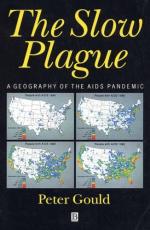|
This section contains 3,906 words (approx. 14 pages at 300 words per page) |

|
The first syringe exchange (SE) program was begun in 1984 in Amsterdam, the NETHERLANDS, out of concern for the spread of hepatitis B among INJECTING DRUG USERS (IDUs). While the hepatitis B virus, hepatitis C virus, and human T cell lymphotropic virus can all cause fatal illness and are all spread through multiperson use ("sharing") of drug-injection equipment, the threat of human immunodeficiency virus (HIV) has clearly become the dominant force in implementing needle-and syringe-exchange programs throughout the world.
HIV is the causative agent for ACQUIRED IMMUNODEFICIENCY SYNDROME (AIDS). As of 1995, HIV infection is eventually fatal; there is no permanently effective treatment for HIV infection. Large-scale vaccination studies began in the late 1980s, and have continued through the 1990s, focusing on some 27 different vaccines (Henderson, 1999). HIV has now been reported among IDUs in sixty countries, from all...
|
This section contains 3,906 words (approx. 14 pages at 300 words per page) |

|


